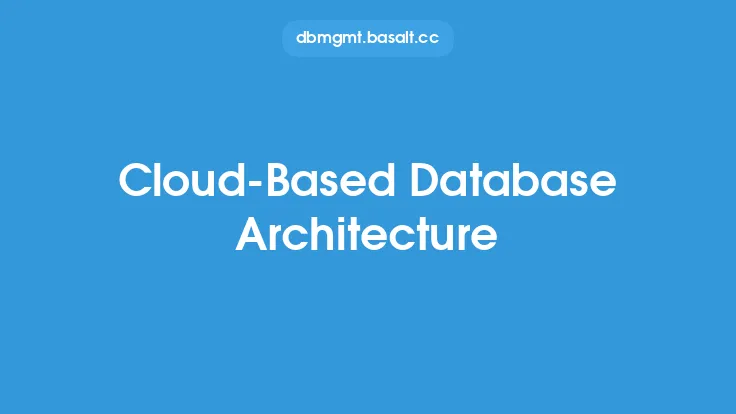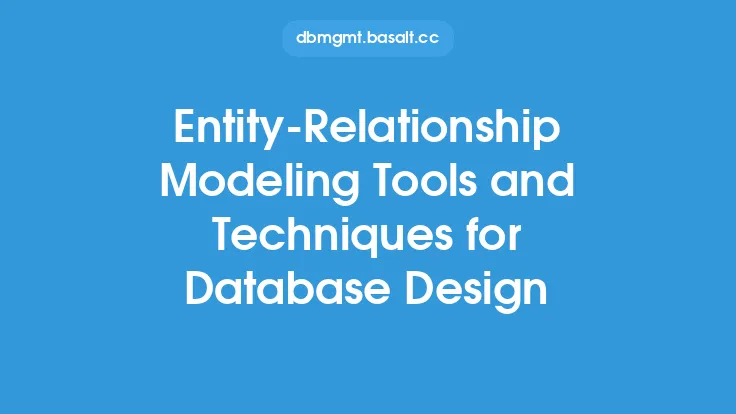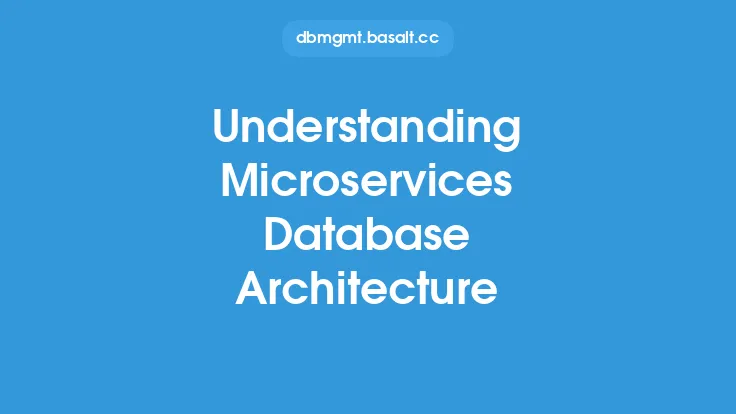Service-oriented architecture (SOA) is a design approach that structures an application as a collection of services that communicate with each other. In the context of database design, SOA is used to create a database architecture that is modular, flexible, and scalable. This approach is particularly useful in large, complex systems where multiple applications and services need to access and share data.
Introduction to Service-Oriented Architecture
Service-oriented architecture is based on the concept of services, which are independent modules that provide a specific functionality. Each service is designed to perform a specific task, and it can be accessed and used by other services or applications. In a database context, services can be used to encapsulate data access and manipulation logic, making it easier to manage and maintain the database.
Key Principles of Service-Oriented Architecture
There are several key principles that underlie the service-oriented architecture approach. These include:
- Loose Coupling: Services are designed to be independent and loosely coupled, meaning that changes to one service do not affect other services.
- Autonomy: Each service is responsible for its own behavior and decision-making.
- Abstraction: Services abstract the underlying complexity of the database, making it easier to access and use the data.
- Reusability: Services are designed to be reusable, reducing the need for duplicated code and improving maintainability.
- Statelessness: Services are designed to be stateless, meaning that they do not maintain any information about the state of the application or the user.
Service-Oriented Database Architecture
A service-oriented database architecture is designed to provide a flexible and scalable way to access and manage data. This approach involves breaking down the database into smaller, independent services, each of which is responsible for a specific aspect of data management. These services can include:
- Data Access Services: These services provide access to the data in the database, allowing applications to retrieve and manipulate data.
- Data Manipulation Services: These services provide the ability to manipulate data, such as creating, updating, and deleting data.
- Data Validation Services: These services provide data validation and verification, ensuring that data is accurate and consistent.
- Data Transformation Services: These services provide data transformation and mapping, allowing data to be converted from one format to another.
Benefits of Service-Oriented Database Architecture
The service-oriented database architecture approach provides several benefits, including:
- Improved Flexibility: Services can be easily added or removed as needed, making it easier to adapt to changing requirements.
- Increased Scalability: Services can be scaled independently, allowing for more efficient use of resources.
- Enhanced Maintainability: Services are designed to be independent and loosely coupled, making it easier to maintain and update the database.
- Better Reusability: Services can be reused across multiple applications, reducing the need for duplicated code and improving maintainability.
Challenges and Limitations of Service-Oriented Database Architecture
While the service-oriented database architecture approach provides several benefits, there are also some challenges and limitations to consider. These include:
- Increased Complexity: Breaking down the database into smaller services can add complexity, making it harder to manage and maintain the database.
- Higher Overhead: The use of services can introduce additional overhead, such as the need for service discovery and communication.
- Data Consistency: Ensuring data consistency across multiple services can be challenging, particularly in distributed systems.
Best Practices for Implementing Service-Oriented Database Architecture
To implement a service-oriented database architecture effectively, several best practices should be followed. These include:
- Define Clear Service Boundaries: Clearly define the boundaries and responsibilities of each service, ensuring that services are independent and loosely coupled.
- Use Standardized Interfaces: Use standardized interfaces and protocols to enable communication between services.
- Implement Service Discovery: Implement service discovery mechanisms to enable services to find and communicate with each other.
- Monitor and Manage Services: Monitor and manage services to ensure that they are performing correctly and efficiently.
Tools and Technologies for Service-Oriented Database Architecture
Several tools and technologies can be used to implement a service-oriented database architecture. These include:
- Database Management Systems: Database management systems such as Oracle, Microsoft SQL Server, and MySQL can be used to implement data access and manipulation services.
- Service-Oriented Architecture Frameworks: Frameworks such as Apache CXF and Oracle SOA Suite can be used to implement and manage services.
- Data Integration Tools: Data integration tools such as Informatica and Talend can be used to integrate data from multiple sources and services.
- Cloud-Based Services: Cloud-based services such as Amazon Web Services and Microsoft Azure can be used to implement and deploy services in a scalable and flexible manner.
Conclusion
Service-oriented architecture is a powerful approach to database design that provides a flexible and scalable way to access and manage data. By breaking down the database into smaller, independent services, organizations can improve flexibility, scalability, and maintainability, while also reducing complexity and overhead. While there are challenges and limitations to consider, the benefits of service-oriented database architecture make it a compelling approach for organizations looking to improve their data management capabilities.





